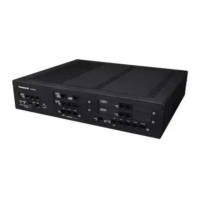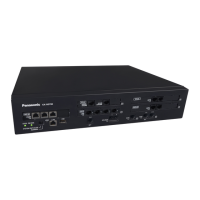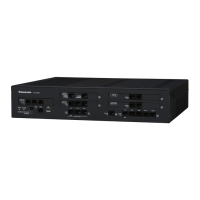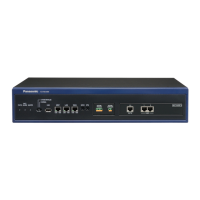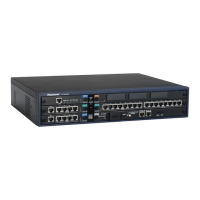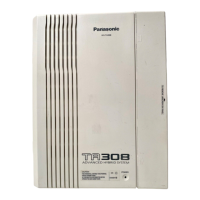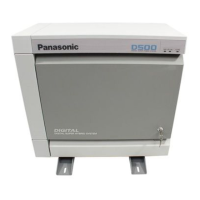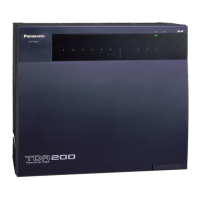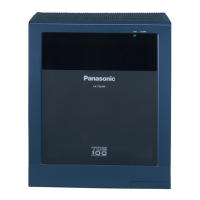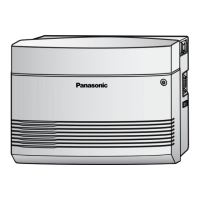2.7 Toll Restriction (TRS)/Call Barring (Barring)
Features
2.7.1 Toll Restriction
(TRS)/Call Barring (Barring)
Description
TRS/Barring can prohibit an extension user from making certain trunk calls by COS programming. It is applied
when the user goes off-hook, a trunk is seized and then a dialled number is sent to the trunk.
Each COS is programmed to have a TRS/Barring level for each time mode (day/lunch/break/night).
There are seven levels available. Level 1 is the highest level and level 7 is the lowest. That is, level 1 allows
all trunk calls and level 7 prohibits all trunk calls. Levels 2 through 6 are used to restrict calls by combining
preprogrammed Denied and Exception Code Tables.
Denied Code Tables
An outgoing trunk call made by an extension with a level between 2 and 6 is first checked against the applicable
Denied Code Tables. If the leading digits of the dialled number (not including the Trunk Access number) are
not found in the table, the call is made. There are five Denied Code Tables, one for each of Levels 2 through
6 respectively.
Complete every table by storing numbers that are to be prohibited. These numbers are defined as denied
codes.
Exception Code Tables
These tables are used to override a programmed denied code. A call denied by the applicable Denied Code
Tables is checked against the applicable Exception Code Tables, and if a match is found, the call is made.
There are five Exception Code Tables, for Levels 2 through 6 respectively.
Complete every table by storing numbers that are exceptions to the denied codes. These numbers are defined
as exception codes.
TRS/Barring Override by System Speed Dialling
If the call is made using System Speed Dialling, the call can override the TRS/Barring. Each COS is
programmed to have a TRS/Barring level for System Speed Dialling.
Once this feature is set, it permits all extension users to make System Speed Dialling calls with the level for
System Speed Dialling. Any extension which sets Extension Dial Lock can also make a call using System
Speed Dialling.
® 10.7.1 PBX Configuration—[2-7-1] System—Class of Service—COS Settings—TRS—
TRS Level for
System Speed Dialling
TRS/Barring Level
The TRS/Barring level is determined by the telephone codes set in the Denied Code Tables and Exception
Code Tables.
As shown in the table below, the Denied Code Tables for the higher levels are applied to all levels below it,
and the Exception Code Tables for the lower levels are applied to all levels above it.
Denied Code Tables
*1
Exception Code Tables
*2
Level 1 Not Programmable Not Programmable
Level 2 Table for Level 2 Tables for Levels 2 through 6
Level 3 Tables for Levels 2 and 3 Tables for Levels 3 through 6
Level 4 Tables for Levels 2 through 4 Tables for Levels 4 through 6
Feature Guide 129
2.7.1 Toll Restriction (TRS)/Call Barring (Barring)
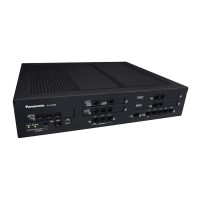
